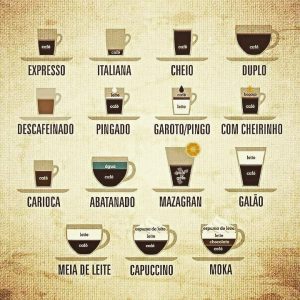How to order Coffee on Madeira Island
Coffee is the heartbeat of the community
Coffee is akin to religion (no offense) to many Portuguese. The Portuguese are partially responsible for the universal success of coffee, when Sr de Mello Palheta was sent from Brazil to French Guiana to fetch a coffee plant in 1727. In the following years, the Portuguese established the first coffee plantings in Brazil. Throughout the rest of the 18th century, Brazilian coffee beans were hauled back to Portugal for roasting and enjoyed by the royal court and noble houses of Europe.

Nowadays, centuries later, coffee drinking seems to be a favorite pastime activity in Portugal and on Madeira. You will see many locals stop for a coffee for pleasure, alone or to socialize.
Portuguese coffee is different from let’s say Italian coffee. Most countries insist on 100% Arabica beans. Portuguese blend a mixture of Arabica and Robusta coffee beans. Why? During the decades of economic isolation (Salazar times), most coffee beans came from Portugal’s colonies. These beans were Robusta. Since then, they mix both Robusta and Arabica beans.
The mixture of both beans is then slowly roasted at low temperatures. The beans are not burned or oily. In short, slow roasting makes for less acidity, stronger aroma and more sweetness. Furthermore, the coffee making machines in most establishments are adapted to the distinct Portuguese taste. They brew with a higher water pressure (than their Italian counterparts for example).
During your stay on Madeira, you will most probably order coffee at some point in time. So here is some essential information. Depending on the type of your coffee you want, here is how you can order it.

Different Coffee Types
Uma Bica (To order: Uma Bica faz favor)
… or rumor has it that: B (Beba) I (isto) C (com) A (Açucar) or “drink this with sugar”. Pure Robusta coffee is quite bitter (as in Salazar’s times) and could only be drunk with loads of sugar. In other words, this is an espresso coffee. Small and black with an extra bag of sugar on the cups’ saucer.
Um Garoto (To order: Um Garoto faz favor)
Coffee with a drop of milk in a small cup (espresso cup). Garoto also means “little boy” in Brazil … so some say that the water has been run through coffee for the second time – being less strong. This is the coffee little kids were allowed to have…
Uma Chinesa (To order: Uma Chinesa faz favor)
Coffee with milk in a large cup – normally half coffee half milk (my favorite). This coffee is called “uma meia de leite” in other parts of Portugal.
Um Cortadinho
A small black coffee with one measure of alcohol (brandy or aguardente)
Um Galão
Coffee similar to the Garoto but in a big glass with ¾ milk. Hence without the expresso kick. Traditionally a galão is made with a second passing of coffee from the machine and is weaker. For an ever milkier version, you can ask try “ um galão clarinho” .
Um Pingado
An espresso with a few milk drops in an espresso size cup.
Uma Carioca
It is a coffee with lots of water.
Um Descafeinado
A decaffeinated coffee (com leite – with milk)
Um Nescafe
This is instant coffee… (com leite – with milk)
Um Chá
This is for tea lovers … (com leite – with milk)

Ordering Coffee!
To order a coffee, try in Portuguese… “Bom dia! Un café, faz favor. » Good morning, one coffee (an espresso), please. Change the coffee type and article depending on what you would like to drink!
Asking for the bill… if you cannot trace the international “I would like the bill, please” sign in the air ?.
At the counter: “Quanto é?”
At the table: “Pode trazer a conta, faz favor.”
Thank you is “Obrigado” is you are a man and “Obrigada” if you are a woman. Obrigado/a goes a long way. Try it.
You are now proficient in Madeira Coffee Culture! Well Done!